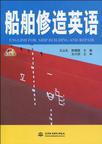船舶修造英语
2010-3
中国水利水电
王占礼//陈朝霞
344
本书是在《船舶修理英语》的基础上修订而成。该书遵循了《船舶修理英语》的编写体例,且直接选用了该书的部分内容,在此对《船舶修理英语》编写组全体人员表示诚挚的感谢。 《船舶修造英语》是根据青岛远洋船员学院船舶工程技术专业教学大纲的要求,并结合中远船务工程集团有限公司船舶修造工作实际而编写的专业英语阅读教材。全书对船舶建造管理、船舶设计、船体结构、船机原理及构造、修船技术规范等进行了介绍,并附有完工单、船舶常用警示标志和修造船常用用语。 本书力求兼顾课堂教学之系统性与企业培训之实用性。每课选材典型,覆盖面广。但限于篇幅,有些内容无法纳入课文部分,则以阅读材料辅之:课文和阅读材料都未涵盖,而又在修造船过程中经常使用的,则在附录的“常用词汇和短语”中列出;练习部分不仅可以强化所学内容,也是对课文内容的补充和延伸。 书中术语翻译以国标为准,如国标未列入,则参照中远船务工程集团有限责任公司企业标准。为方便读者,有些术语采用了括号内加注“行话”处理。如,gasket垫圈(床垫)。有些术语实在查不到现成翻译,笔者斗胆硬译了出来,如:snap connector,译为:快动接头。不当之处敬请方家斧正! 本书定位于中级及以上英语水平读者。建议船舶修造专业英语的初学者先学习本书前两部分:“船体”和“船机”,积累一定量的专业词汇后,再学习“船舶修理规范”;而对于工作繁忙的船厂读者,建议直接学习船舶修理规范部分。 本书由王占礼、陈朝霞主编,吴万千、刘宁、江园、张光波、陈蓓、姜向东、王春、刘蓓、涂志平、丁鑫及中国海洋大学于胜轮机长参加了本书部分章节编写工作。
本书是为船舶工程技术专业编写的专业英语教材,也可供修船业内从事生产、管理的技术人员英语培训使用。全书由船舶建造管理、船舶设计、船体结构、船机原理及构造、修船技术规范和修造船常用语组成。读者可以通过学习本书,熟练掌握常用修造船英语术语和句式,并有助于提高修造船业务能力,以熟练地进行船舶修造业务方面的英语交流。
前言 Part One Ship Design and Hull Construction Lesson 1 Realization of CIM Based on Systematization of Production Department Lesson 2 Ship Design Lesson 3 Bottom Structure Lesson 4 Shell Plating and Framing Lesson 5 Bulkheads and Pillars Lesson 6 Decks and Hatches Lesson 7 The Fore/Aft End Structure of a Ship Lesson 8 Plate and Section Preparation Lesson 9 Prefabrication and Outfit Modules Lesson 10 Welding and Cutting Lesson 11 Corrosion and Its Prevention Lesson 12 Engineering Materials Part Two Ship-borne Machinery and Equipment Lesson 13 Diesel Engine ( I ) Lesson 14 Diesel Engine ( II ) Lesson 15 Transmission System Lesson 16 Marine Pumps and Piping System Lesson 17 Marine Boilers and Fresh Water Generator .Lesson 18 Marine Refrigeration and Air Conditioning Lesson 19 Steering Gear Lesson 20 Deck Machinery Lesson 21 Marine Electrical System Lesson 22 The Application of Automation on Board Part Three Ship Repair Quality Standards and Specifications Lesson 23 Ship Repair Contract Lesson 24 IACS Repair Quality Standard for Existing Ships ( I ) Lesson 25 IACS Repair Quality Standard for Existing Ships ( II ) Lesson 26 IACS Repair Quality Standard for Existing Ships (III) Lesson 27 Structural Steelwork Lesson 28 Hull Coating and Anode Replacement Lesson 29 Tank Coating and Anodes Replacement Lesson 30 Main Engine Repair ( I ) Lesson 31 Main Engine Repair ( II ) Lesson 32 Boiler Plant Repair Lesson 33 Electrical Repair Work Lesson 34 Propeller Removal / Replacement Lesson 35 Steering System Reconditioning Lesson 36 Anchor and Windlass Reconditioning Lesson 37 Pump and Pipe Work and Valve Reconditioning Lesson 38 Miscellaneous Repair Work Part Four Appendices Appendix A Work-done List Appendix B Signs of Warning and Caution Appendix C Useful Words and Expressions in Ship Repair
Owners requirements Ships are designed, built, and operated to fulfill the requirements and limitations specified bythe operator and owner. These owners requirements denote the essential considerations which areto form the basis for the design. They may be generally stated as: a specified minimumdead weight carrying capacity, a specified measurement tonnage limit, a selected speed at sea, or a maximum speed on trial, and maximum draft combined with other draft limitations. In addition to these general requirements, there may be a specified distance of travel without refueling and maximum fuel consumption per shaft horsepower hour limitation, as well as otheritems which will influence the basic design. Apart from these requirements, the ship owner expectsthe designer to provide a thoroughly efficient ship. Such expectations include minimum displacement on a specified deadweight carrying capacity, maximum cargo capacity on a minimum gross tonnage, appropriate strength of construction, the most efficient type of propelling machinery with due consideration to weight, initial cost, and cost of operation, stability and general sea worthiness, and the best loading and unloading facilities and ample accommodations for stowage.Design procedure From the specified requirements, an approach is made to the selection of the dimensions,weight, and displacement of the new design. This is a detailed operation, but some rather directa pproximations can be made to start the design process. This is usually done by analyzing data available from an existing ship which is closely similar. For example, the design displacement can be approximated from the similar ships known deadweight of, say, 11 790 tons and the knowndesign displacement of 17 600 tons. From these figures, a deadweight-displacement ratio of 0.67 isobtained. Thus, if the deadweight for the new design is, for example, 10 000 tons, then theapproximate design displacement will be 10 000/0.67 or 15 000 tons. This provides a starting pointfor the first set of length, beam, and draft dimensions, after due consideration to other requirementssuch as speed, stability, and strength. Beam is defined as the extreme breath of a ship at its widestpart, while draft is the depth of the lowest part of the ship below the waterline.Length and speed These factors are related to the hull form, the propulsion machinery, and the propeller design.The hull form is the direct concern of the naval architect. Both the propulsion machinery and propeller design greatly influence the design of the hull form. Speed has an important influence on the length selected for the ship, The speed of the ship is related to the length in term of the ratio V/L, where V is the speed in knots and L is the effective waterline length of the ship. As the speed-length ratio increases, the resistance of the ship increases. Therefore, in order to obtain an efficient hull form from a resistance standpoint, a suitable length must be selected for minimum resistance.

刚拿来翻了下,全书从设计结构到设备,标准规范很详细,要是能给每篇附一篇中文翻译那就再好不过了,因为看的话,大都的意思能明白,但是能通过中文准确的表达出来,那又是另外一回事了,所以有一个标准,明确的译文,应该对读者更有帮助吧
专业性很强的一本好书
编者水平有限,建议大家不要购买,还是买哈尔滨工业大学出版的
给老公买的书,希望他工作顺利
有点鸡肋的味道